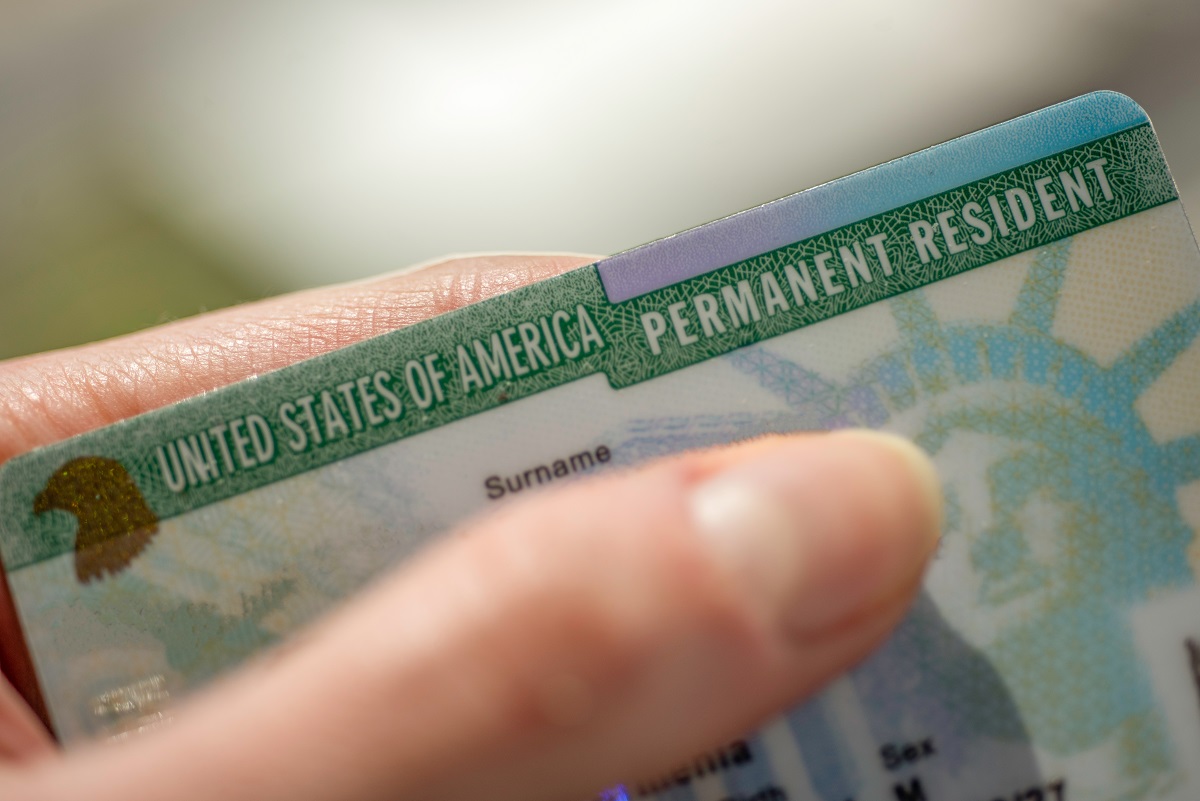
To bring a spouse to the U.S., you must follow a multi-step immigration process that includes filing a petition, waiting for government approval, and completing visa processing at a U.S. embassy or consulate.
This path to permanent residency (green card status) is called consular processing and is used when your spouse is currently outside the United States. While the process involves several government agencies and can feel overwhelming, breaking it down step-by-step makes it much easier to understand.
Step 1: Confirm Eligibility to Bring Your Spouse to the U.S.
Step 2: File an Immigrant Visa Petition Package
Step 3: Wait for Petition Approval and NVC Case Creation
Step 4: Pay Fees and Submit Documents to NVC
Step 5: Medical Exam and Interview Scheduling
Step 6: Attend the Visa Interview
Step 7: Receive Immigrant Visa and Travel to the U.S.
Step 8: Build Your Life Together in the U.S.
Frequently Asked Questions (FAQs)
Help Me Bring My Spouse to the U.S.
Below is a clear and detailed walkthrough of the consular processing path to help you successfully reunite with your spouse in the United States.
Confirm Eligibility to Bring Your Spouse to the U.S.
You must be a U.S. citizen, U.S. national, or lawful permanent resident (green card holder) to sponsor a spouse.
Must Be a Valid Category
As a U.S. citizen, your spouse doesn't have to wait for a visa. You can file a petition for your spouse at any time. There's no annual cap for immediate relative categories (CR-1/IR-1), so the process usually moves faster. If you're a green card holder or U.S. national, your spouse is placed in a visa preference category (F2A), which can mean a longer wait depending on visa availability.
Must Be a Valid Marriage
You must also prove that your marriage is legally valid and bona fide. This means your marriage must be legally recognized in the country where it occurred, and you must show it wasn’t entered into solely for immigration benefits.
File an Immigrant Visa Petition Package
To bring a spouse to the U.S., the official starting point is for the U.S spouse to file an immigrant visa petition with U.S. Citizenship and Immigration Services (USCIS). The petition and supporting documentation establish that you have a qualifying relationship with a foreign national spouse and want to start the immigration process. Generally, you'll need to submit:
- I-130, Petition for Alien Relative
- I-130A, Supplemental Information for Spouse Beneficiary
- Filing fee (currently $535)
- Photocopy of the marriage certificate
- Evidence of your U.S. citizenship or permanent resident status
- Proof of your relationship (photos, messages, joint financial records, etc.)
Submitting a complete and properly prepared package is vital as this step typically involves the longest wait. Failure to submit a complete or well-documented petition will likely result in a Request for Evidence or possible denial.
USCIS may require additional evidence based on your situation. Refer to USCIS instructions or use a service like CitizenPath to prepare your forms and get a checklist of supporting documents tailored to your situation.
Wait for Petition Approval and NVC Case Creation
Once USCIS approves Form I-130, they will forward the case to the National Visa Center (NVC). Again, the petition only establishes that you have a qualifying relationship. It is not the approval of a visa or green card.
If you're a U.S. citizen, your spouse's case can move forward immediately. If you're a green card holder, your spouse will need to wait for a visa number to become available, based on the Visa Bulletin.
When a visa is available, the NVC creates a case and sends instructions for the next steps. You’ll receive a Welcome Letter from the NVC with a case number and invoice ID. Use this information to log into the Consular Electronic Application Center (CEAC) which you'll need in the next step.
Pay Fees and Submit Documents to NVC
Next, you’ll need to pay processing fees and submit both financial and civil documents through the CEAC portal. At the time of publishing, the amount of these fees are:
- Immigrant visa application fee: $325
- Affidavit of Support fee: $120

You will also need to upload documents such as:
- Form DS-260 (Online Immigrant Visa Application)
- Form I-864, Affidavit of Support (to show you can financially support your spouse)
- Civil documents: birth certificate, marriage certificate, divorce/death certificates (if applicable), police clearance certificate, and passport biographic page
Though you won’t be able to preview the online application to apply for a green card, you can view a sample DS-260 application. After submitting the DS-260 application through CEAC, you must print the confirmation page and take it to your interview. Upon completion of this step, your spouse has applied for a green card, and the NVC will confirm by email that the case is "documentarily" complete.
Medical Exam and Interview Scheduling
Finally, the NVC will schedule an interview at the U.S. embassy or consulate in your spouse’s country.
Interview wait times depend on the consulate’s availability and local backlogs. Once they schedule an interview, the NVC will send an appointment letter with the date, time, and location.
At this point, your spouse should complete a medical examination with a doctor approved by the U.S. consulate. Instructions will be provided. This is a required part of the visa process to bring a spouse to the U.S.
Attend the Visa Interview
The visa interview is the final hurdle in the consular process. During the interview, a consular officer will:
- Review your spouse’s application and documents
- Ask questions to confirm the validity of the marriage
- Determine if your spouse is eligible for an immigrant visa
It’s critical to be honest and prepared. If the officer is satisfied, they’ll approve the spousal visa. If the officer needs more information, they may issue a 221(g) refusal, which places the case in “administrative processing” until documents or information are provided. You can help your spouse get ready for the consular interview and review some of the potential interview questions for spouses.
Receive Immigrant Visa and Travel to the U.S.
After approval, it generally takes about 7-10 days for your spouse to receive the passport back with the immigrant visa. But this timeframe can vary by location and by case.
Your spouse must enter the United States before the visa expires (typically within six months). Upon arrival, they’ll be inspected at a U.S. port of entry and admitted as a permanent resident. USCIS will mail the physical green card to your U.S. address a few weeks later.
Build Your Life Together in the U.S.
Once you bring your spouse to the U.S., they are officially a permanent resident and can begin their new life in the United States. As a green card holder, your spouse can:
- Work legally in the U.S.
- Apply for a Social Security number
- Travel in and out of the U.S. (with some restrictions)
- Eventually apply for U.S. citizenship (after three years if still married to a U.S. citizen)
Frequently Asked Questions (FAQs)
Smart Software to Make It Easy
Human Support When It Matters
Navigating the U.S. immigration system can be challenging, but you don’t have to do it alone.
CitizenPath provides affordable, step-by-step help to prepare your Immigrant Visa Petition Package (Form I-130) and Affidavit of Support Package (Form I-864). Immigration attorneys designed our service to help you avoid costly mistakes, rejections and denials without the high cost of an attorney.
Sign up for our free newsletter for regular tips and updates to bring a spouse to the U.S. and other important immigration considerations.
Want more immigration tips and how-to information for your family?
Sign up for CitizenPath’s FREE immigration newsletter and
SAVE 10%
on our immigration services










